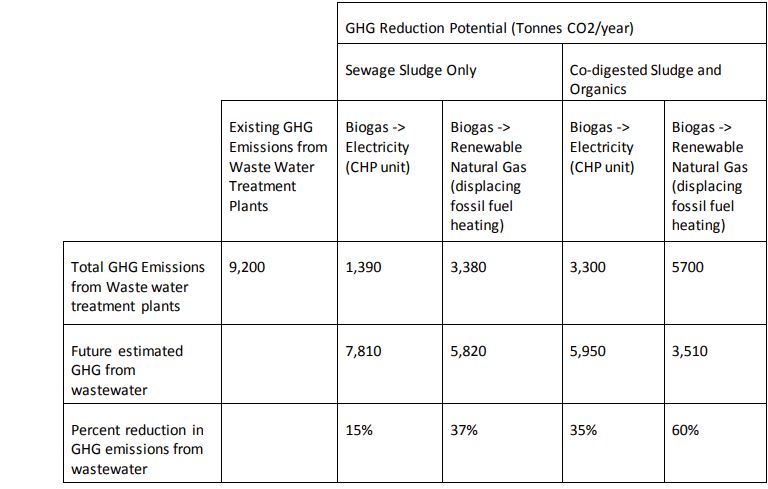Anaerobic Digestion
Anaerobic Digestion is a series of biological processes in which microorganisms break down biodegradable material in the absence of oxygen generating a biogas in a closed system. The biogas that is generated is made mostly of methane and can be scrubbed to create a renewable natural gas, which can either be injected into natural gas pipelines, used as a fuel source for heavy duty vehicles or used in a CHP system to generate electricity.
In January 2020, the City completed an Integrated Site Energy Master Plan (ISEP) which identified strategies to move the LRWRP and LRPCP towards net zero energy and reduce greenhouse gas emissions. The ISEP estimated that anaerobically digesting sewage sludge could reduce GHG emissions at the LRPCP by 390-740 tonnes CO2/year and 1,390-2,640 tonnes CO2/year at the LRWRP. However, co-digesting sludge from both plants along with source separated organics would reduce GHG emissions further to 3,200 - 5,700 tonnes CO2/year. These are significant GHG emissions reductions that could result in 15 to 60% reduction in the treatment plant’s carbon footprint (see Table 2 below).
Table 2: GHG Reduction Potential

Regional contributions in either biosolids or organics has the potential to significantly reduce GHG emissions further.